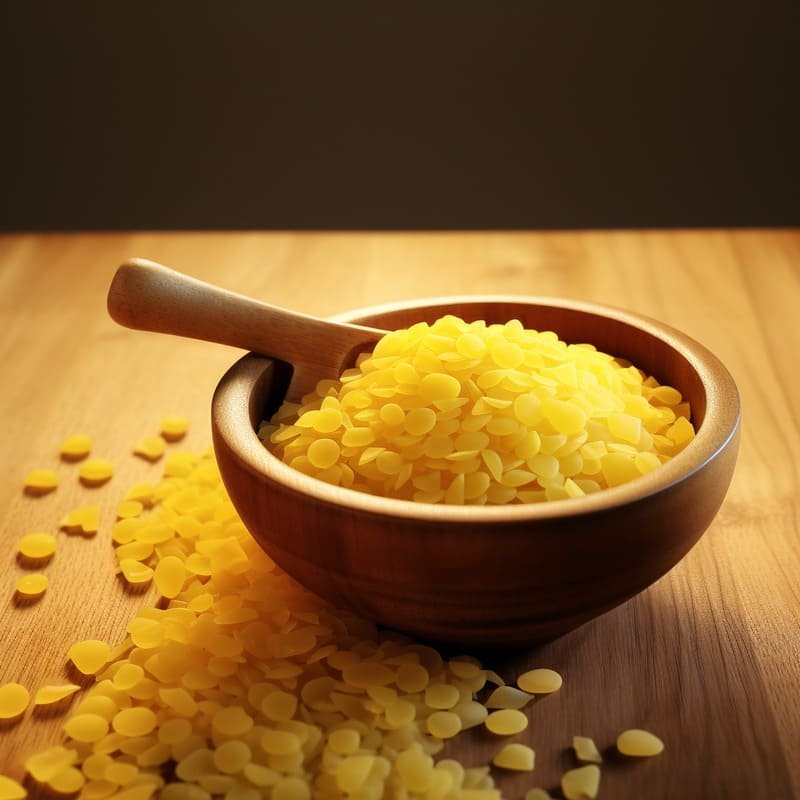Candle makers often face a dilemma: should I use paraffin wax or beeswax for my candles? Each wax has unique properties that can drastically impact the candle’s performance, appeal, and sustainability. Choosing the right wax isn't just about preferences—it's about understanding your needs and your audience.
Paraffin wax and beeswax offer distinct advantages in candle making, from burn time to scent throw. While paraffin wax is versatile and cost-effective, beeswax is prized for its natural qualities and clean burn.
Let’s dive deeper to uncover the strengths and weaknesses of these two waxes so you can make an informed decision.
Why Do Candle Makers Love Paraffin Wax?
Paraffin wax is a favorite in the candle industry. Why? It’s affordable, easy to work with, and widely available. Known for its exceptional scent throw, paraffin wax can carry fragrances well, making it ideal for scented candles. It also comes in various melting points, offering flexibility for creating candles with different finishes and functions.
But, paraffin wax isn't perfect. Derived from petroleum, it raises concerns about sustainability. Additionally, it may release soot if burned improperly, impacting air quality.
What Makes Beeswax Unique?
Beeswax, on the other hand, is a natural and eco-friendly alternative. Harvested from bees, it burns longer and cleaner than paraffin wax. This makes it a top choice for eco-conscious customers. Beeswax also produces a warm, honey-like scent, even without added fragrance, and has a high melting point, ensuring a slow, steady burn.
However, beeswax can be expensive. Limited production and high demand drive up costs, making it less accessible for large-scale or budget-conscious projects.
How Do Their Burn Qualities Compare?
- Burn Time: Beeswax candles outlast paraffin ones, thanks to their dense composition. If longevity matters, beeswax is the clear winner.
- Cleanliness: Beeswax burns cleaner, with minimal soot. Paraffin, while reliable, may release visible soot if not managed properly.
- Fragrance Throw: Paraffin wax excels here. Its structure locks in fragrance oils, releasing them effectively when lit. Beeswax’s natural scent can compete with added fragrances.
How Do Their Sustainability Levels Differ?
Beeswax is 100% natural, renewable, and biodegradable. Choosing it supports beekeeping practices that benefit agriculture and ecosystems. Paraffin wax, derived from crude oil, is less eco-friendly. However, paraffin is a byproduct of oil refining, meaning it repurposes material that might otherwise be wasted.
If sustainability is a priority for your brand, beeswax will align better with your values.
What About Candle Aesthetics?
Paraffin wax is a chameleon—it can be dyed any color and molded into intricate designs. Beeswax, though more limited in customization, naturally stands out with its golden hue and smooth finish. If vibrant colors or unique shapes are your goal, paraffin wax may be more suitable.
Which Wax Should You Choose?
- If cost, scent throw, and design flexibility are your priorities, paraffin wax is the way to go.
- If you value sustainability, natural materials, and a longer burn, beeswax is unmatched.
Ultimately, your choice should reflect your brand’s values and your customers' preferences.
Topic-Related Questions to Explore
- What are the environmental impacts of paraffin wax vs. beeswax?
- How does the scent throw of each wax compare?
- Can paraffin wax be blended with natural waxes for better performance?
- Are beeswax candles worth the higher price?
- What are some tips for reducing soot when using paraffin wax?
- How does the melting point affect candle performance?
More Related Questions
- Which wax is best for scented candles?
- How do you make eco-friendly candles with beeswax?
- What are the health implications of burning paraffin candles?
- Can I mix beeswax and paraffin wax?
- How do different wicks perform with paraffin vs. beeswax?
Conclusion
Choosing between paraffin wax and beeswax boils down to your goals. Paraffin offers versatility and affordability, while beeswax excels in sustainability and burn quality. By understanding their strengths and trade-offs, you can create candles that shine—both in performance and appeal.
For more insights into candle making, visit our website. Let’s craft brilliance together!





